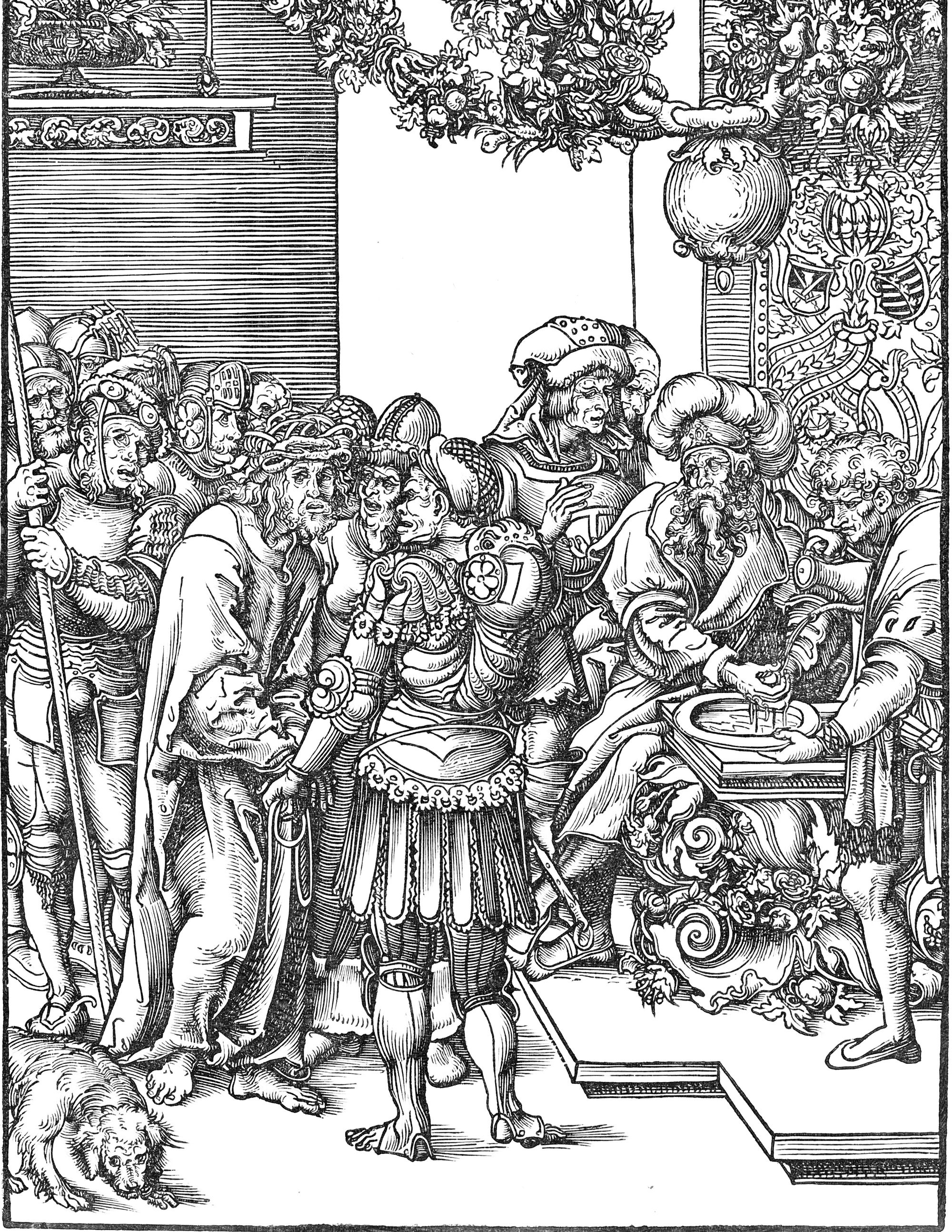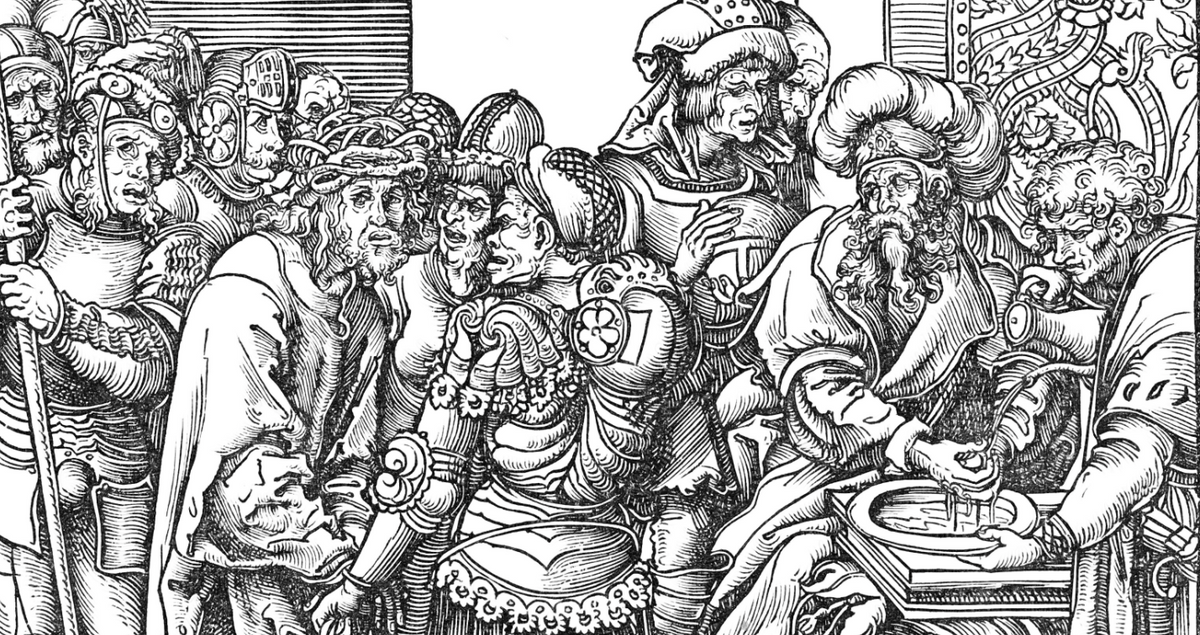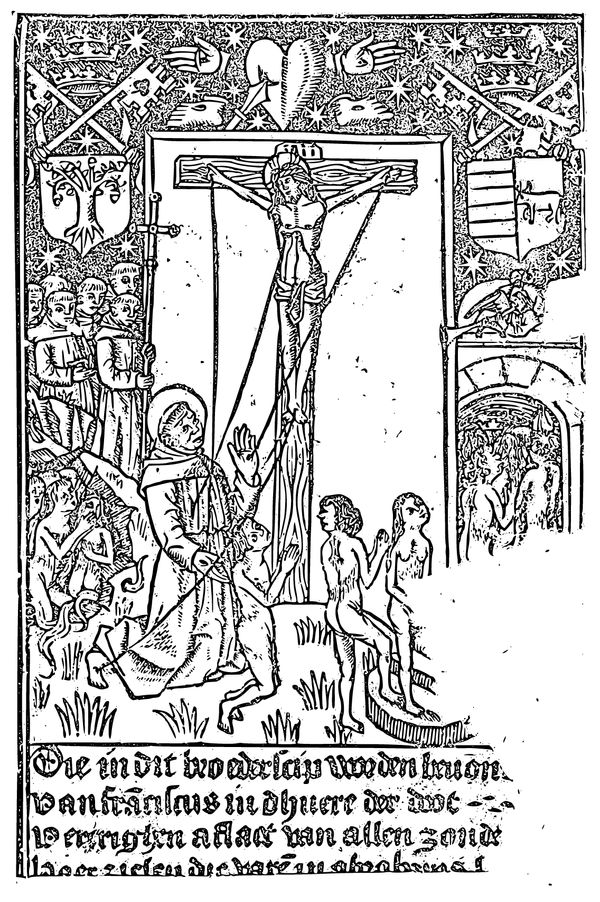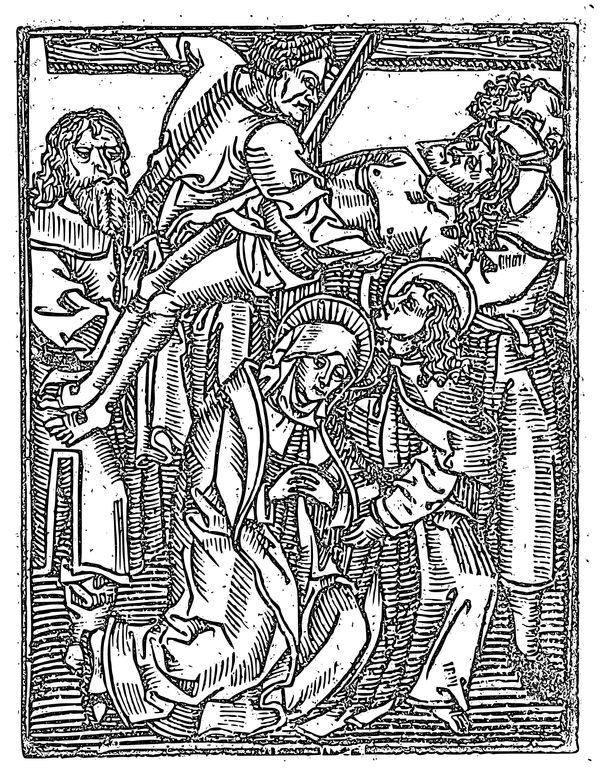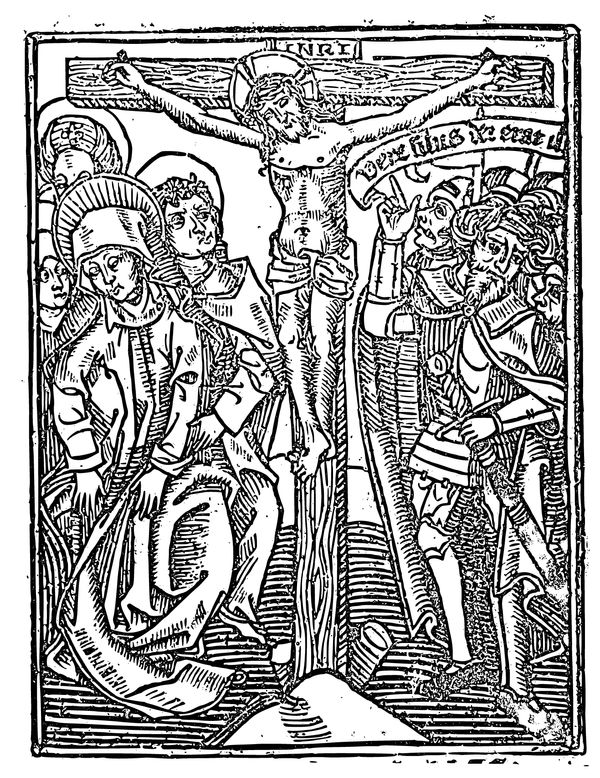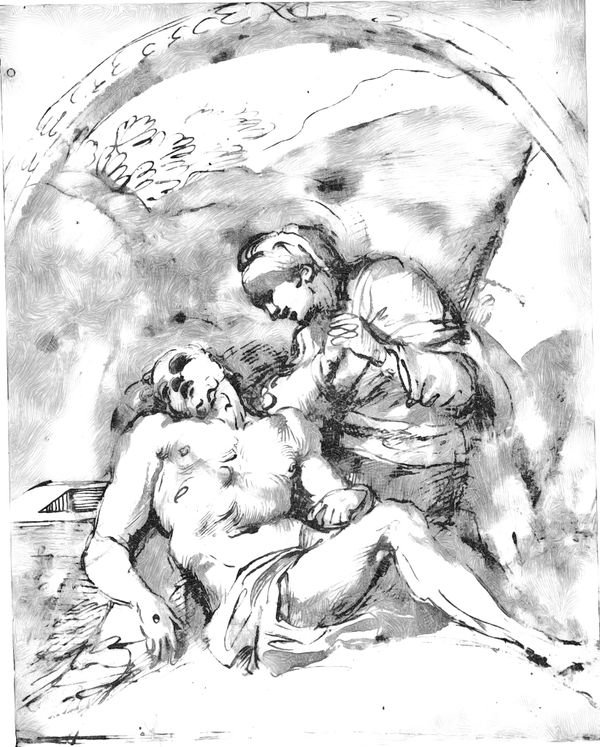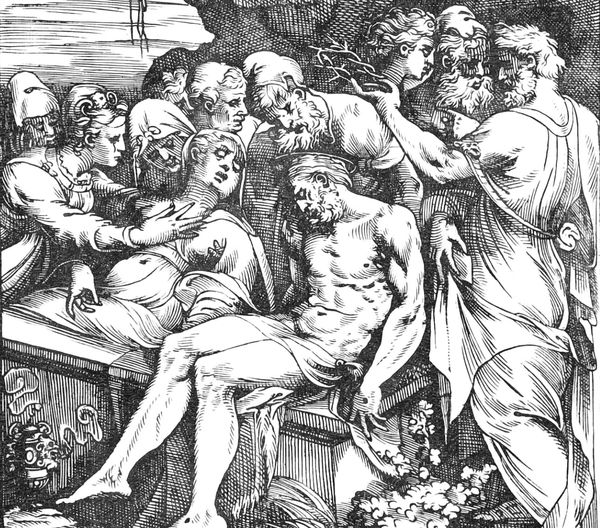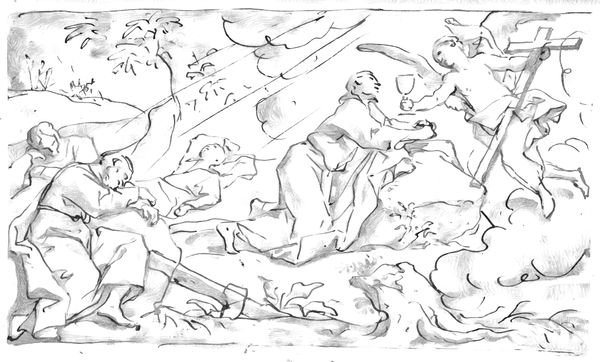At the Passover of most likely 30 or 33, Pontius Pilate condemned Jesus of Nazareth to death by crucifixion in Jerusalem. The main sources on the crucifixion are the four canonical Christian Gospels. Pilate's role in condemning Jesus to death is also attested by the Roman historian Tacitus, who, when explaining Nero's persecution of the Christians, explains: "Christus, the founder of the name, had undergone the death penalty in the reign of Tiberius, by sentence of the procurator Pontius Pilate, and the pernicious superstition was checked for a moment..." (Tacitus, Annals 15.44).
Pilate is one of the most important figures in early Christian art; he is often given greater prominence than Jesus himself. He is, however, entirely absent from the earliest Christian art; all images postdate the emperor Constantine and can be classified as early Byzantine art. Pilate first appears in art on a Christian sarcophagus in 330; in the earliest depictions he is shown washing his hands without Jesus being present. In later images he is typically shown washing his hands of guilt in Jesus' presence.
Free Downloads Below
Hi-Res
1200px
800px
